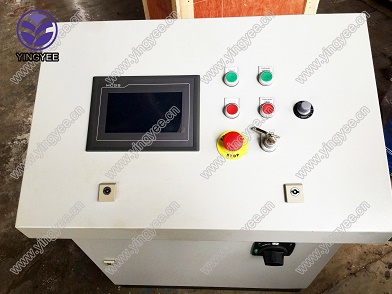
The Evolution of Roof Tile Making Machinery
In the construction industry, the importance of quality roofing cannot be overstated. Roof tiles play a crucial role in protecting buildings from weather elements while also contributing to their aesthetic appeal. As the demand for durable and stylish roofing materials increases, so too does the need for advanced machinery that can manufacture roof tiles efficiently and effectively. This article explores the evolution of roof tile making machinery, highlighting its impact on the industry and the benefits it brings to both manufacturers and consumers.
Historically, roof tiles were made by hand, a labor-intensive process that required skilled artisans to mold, bake, and finish each tile. While this method produced high-quality products, it was not feasible for large-scale production. As the construction sector grew in the early 20th century, so did the need for more efficient manufacturing processes. This demand led to the introduction of machinery designed specifically for roof tile making.
The first significant advancement in roof tile manufacturing machinery was the development of hydraulic presses. These machines allowed for greater precision in shaping tiles and significantly increased production rates. The hydraulic presses used high pressure to mold clay into the desired tile shape, which reduced the amount of labor required and minimized human error. This transition marked the beginning of industrialized roof tile production, making it more accessible and affordable for builders and homeowners alike.
As technology continued to advance, so did roof tile making machinery. The introduction of computer numerical control (CNC) technology revolutionized the industry further. CNC machines are capable of producing complex designs with incredible precision, allowing manufacturers to create a wider variety of tile styles and sizes. This flexibility not only catered to aesthetic preferences but also heightened the functionality of roof tiles, enhancing their performance in various climates and weather conditions.

Moreover, the automation of the tile-making process decreased production costs and increased efficiency. Automated systems can operate continuously, producing large quantities of roof tiles in a fraction of the time it would take traditional methods. This efficiency has made it possible for manufacturers to meet the growing demand for roof tiles in an ever-expanding construction market.
Another significant development in roof tile making machinery is the integration of eco-friendly practices. With the increasing awareness of environmental issues, manufacturers have begun utilizing sustainable materials and processes. Modern machinery can use recycled materials in tile production, which not only reduces waste but also creates greener building solutions. Additionally, advancements in kiln technology have allowed for more energy-efficient firing processes, further decreasing the environmental footprint of roof tile production.
Today, roof tile making machinery offers a variety of options, including extruders, cutters, and dryers, all designed to streamline the manufacturing process. The equipment can customize tile shapes and sizes to meet specific design requirements, ensuring that builders have access to the right materials for their projects. Furthermore, the introduction of smart technology in manufacturing machinery allows for real-time monitoring of production processes, ensuring quality control and minimizing defects.
In conclusion, the evolution of roof tile making machinery has had a profound impact on the construction industry. From hand-made tiles to high-tech automated processes, these advancements have enabled manufacturers to produce high-quality roof tiles at scale, meeting the growing demands of builders and homeowners. As the industry continues to evolve, we can expect further innovations in machinery and technology that will further enhance the efficiency, sustainability, and aesthetic diversity of roof tiles. With these advancements, the future of roofing looks promising, ensuring that buildings will not only be well-protected but also visually appealing.